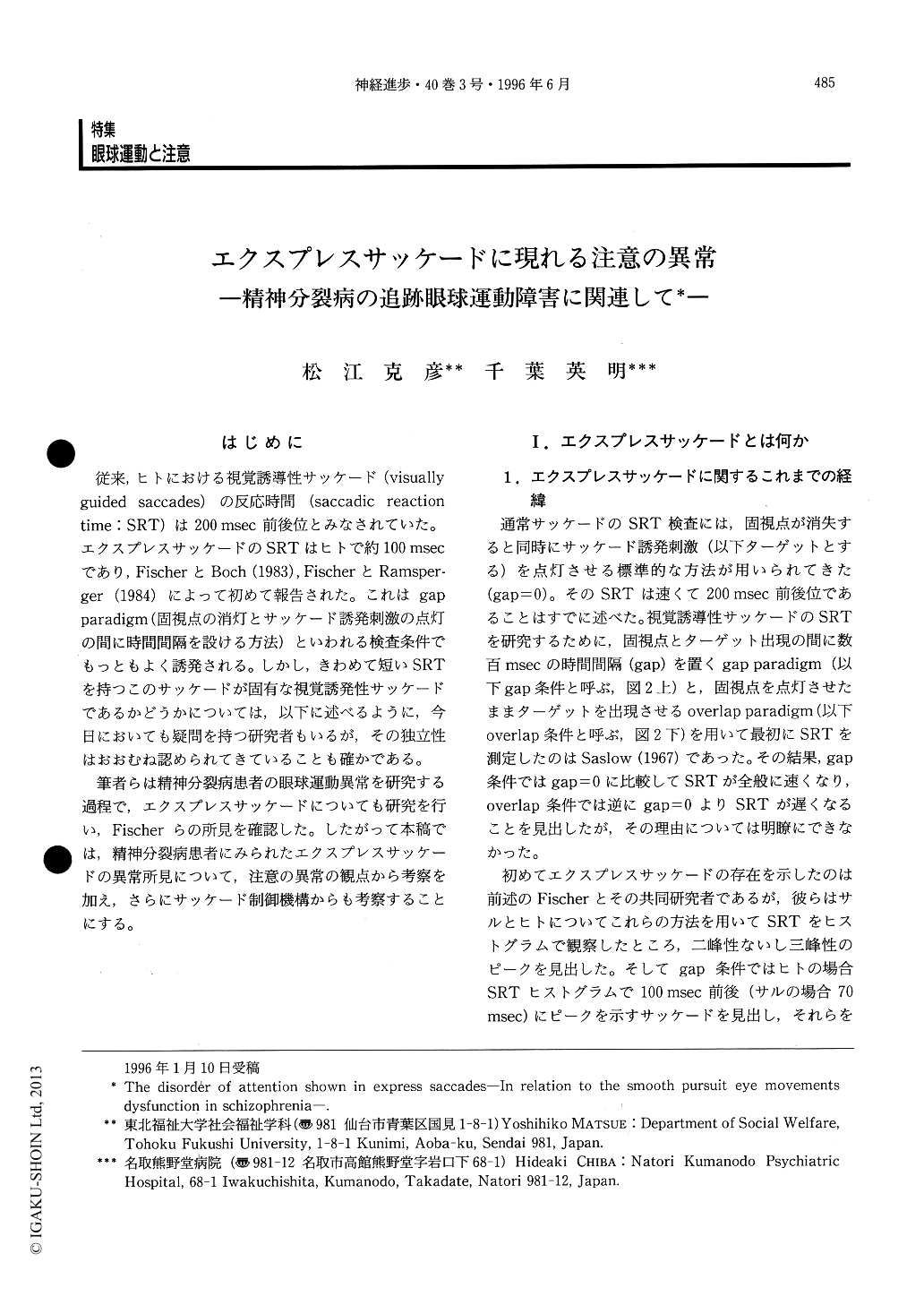Japanese
English
- 有料閲覧
- Abstract 文献概要
- 1ページ目 Look Inside
はじめに
従来,ヒトにおける視覚誘導性サッケード(visually guided saccades)の反応時間(saccadic reaction time:SRT)は200msec前後位とみなされていた。エクスプレスサッケードのSRTはヒトで約100msecであり,FischerとBoch(1983),FischerとRamsperger(1984)によって初めて報告された。これはgap paradigm(固視点の消灯とサッケード誘発刺激の点灯の間に時間間隔を設ける方法)といわれる検査条件でもっともよく誘発される。しかし,きわめて短いSRTを持つこのサッケードが固有な視覚誘発性サッケードであるかどうかについては,以下に述べるように,今日においても疑問を持っ研究者もいるが,その独立性はおおむね認められてきていることも確かである。
筆者らは精神分裂病患者の眼球運動異常を研究する過程で,エクスプレスサッケードについても研究を行い,Fischerらの所見を確認した。したがって本稿では,精神分裂病患者にみられたエクスプレスサッケードの異常所見について,注意の異常の観点から考察を加え,さらにサッケード制御機構からも考察することにする。
Express saccades are those that have very short latencies of about 100 msec. Fischer and Ramsperger (1984) found that saccadic reaction times (SRTs) histograms have two peaks at around 100 msec and 150 msec in a gap paradigm in human saccades and termed such saccades with fast SRTs at around 100 msec express saccades. In the gap paradigm employed by them, the central fixation point is extinguished 200msec before the peripheral target becomes visible, enabling subjects to prepare to shift their eyes to the target.

Copyright © 1996, Igaku-Shoin Ltd. All rights reserved.


